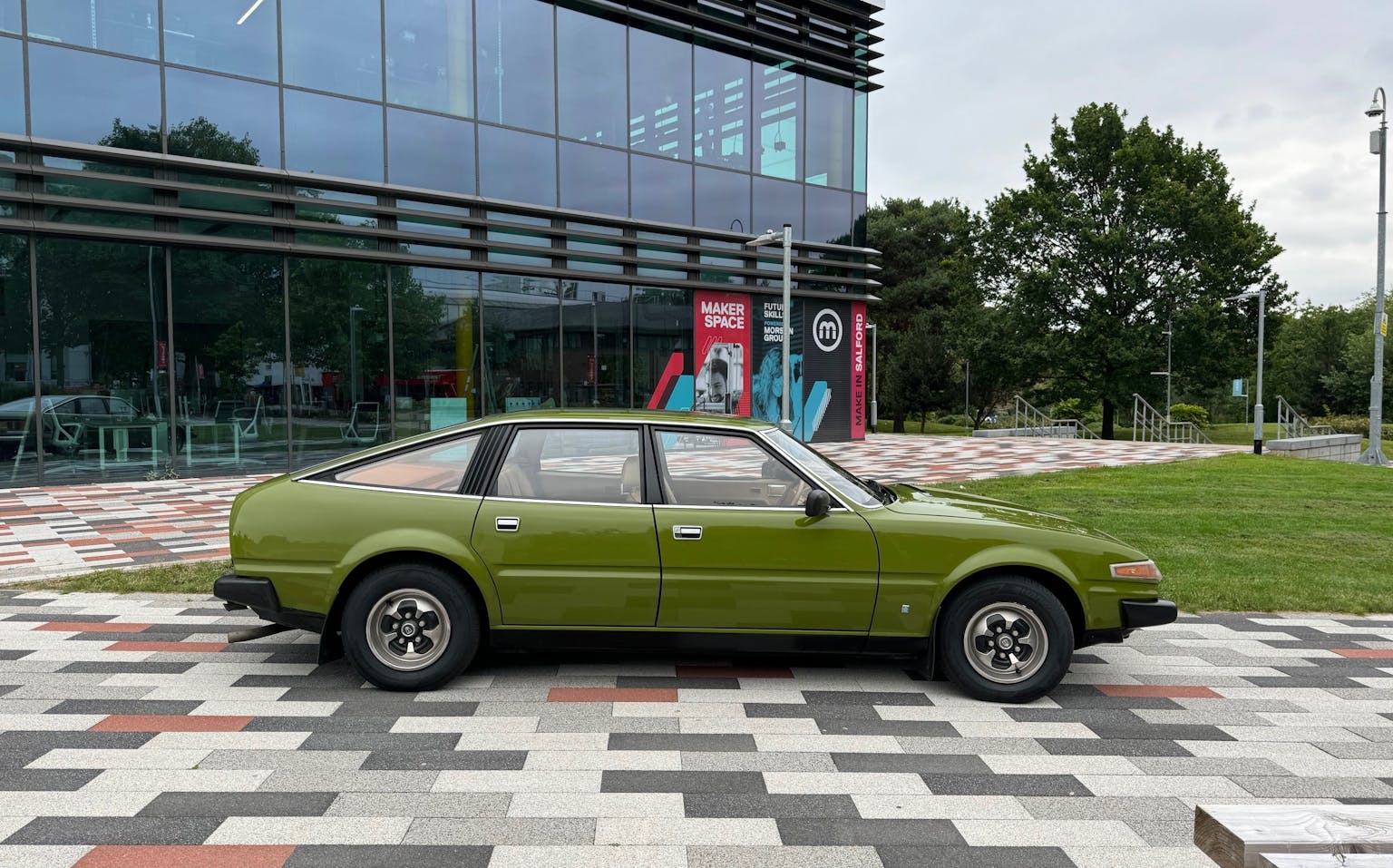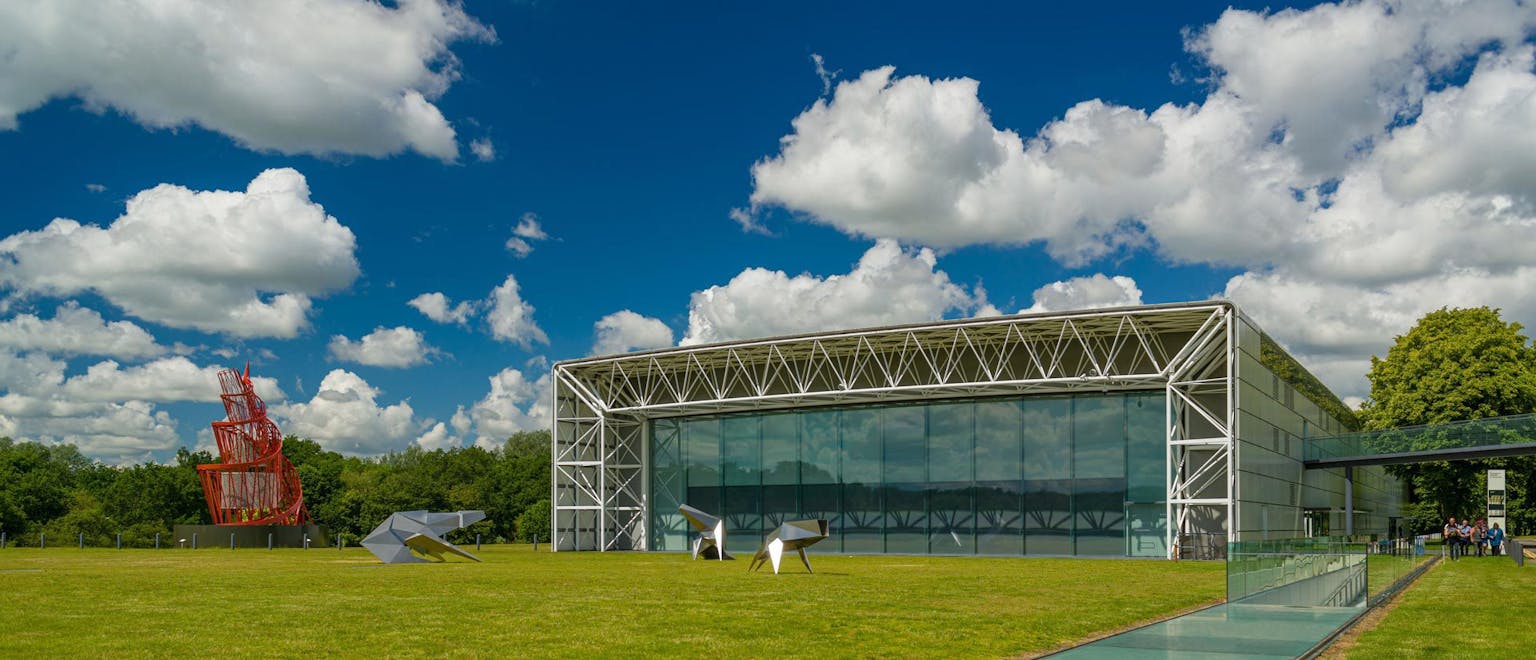Associate Partner John Piercy Holroyd launches 'A Time A Place'

Our Associate Partner and Manchester Studio Lead John Piercy Holroyd recently celebrated the launch of his new book, 'A Time A Place', in Salford. Written in collaboration with photographer Dan Hopkinson, the book pairs every 'Car of the Year' (1964 - 1982) with a building completed in the same year.
Following the successful event, which saw over 100 people attending from all disciplines - architecture, design, higher education, journalism, and museums - John reflects on the project.
‘A Time A Place’ is an exploration of car and building design over a sixty-year period, split into three volumes, each covering 20 years. This first volume explores the divergent themes exhibited in both car and vehicle design during this time, from a shared modernist language in the immediate post-war period to a complete separation by the start of the 1980s.
The metric is the European Car of the Year award, which celebrates its 60th anniversary this year. The project aims to present everyday vehicles that used to be a common sight on our roads, but have now all but disappeared, against a series of buildings that have survived and that are still in use every day. The project questions what has become of architecture that was designed around, and for vehicle use and how has this adapted to a different, low carbon vision of the world.
The photographs are not meant to be an accurate historical recreation. They are contemporary images, informed by period advertising and cultural references shot in real time.
Some of the buildings have a very clear theme and link to the cars. This is reflective of the common ideals that were shared across wider society at a particular time. For instance, the first year of the award, 1964, the Rover P6 and Crystal Palace Sports Centre are both highly confident, modernist designs that broke with tradition and only look forward in keeping with that spirit of post war optimism.
Similarly, the idea of 'technology transfer' reached its peak in the mid to late 1970s when similar components were used on both the building and car, for example, flush glazing with neoprene joints (Sainsbury Centre and Porsche 928) and thermoplastic moulding for cladding and bumpers (Herman Miller Factory and Chrysler Alpine).
However, there are some pairings that felt right in a different sense and required an exploration of different themes. For instance, we could only find a Series 1 Fiat 127 in Belfast, so we arranged the photoshoot at the Ulster Museum, which raised a whole narrative around authorship for both the architect, Francis Pym and the designer, Pio Manzu. Similarly, we took the Fiat 124 - one of the most produced vehicle platforms in history - and set it against a system-built tower block in Coventry.
Both of these approaches at their conception represent the placeless ideal of a universal modernism, to be applied anywhere, regardless of context. However, in the intervening years, the Fiat is now one of the only remaining versions of this model and is now more commonly remembered as a Lada, but has become a cherished member of this owners family. Similarly, the tower block has now become part of the story of the city fabric of Coventry.

The car was primarily used to select the location. Some of these vehicles are vanishingly rare, particularly the European models from the late 1960s and early 1970s.
Insufficient corrosion protection and a scarcity of spare parts often meant that the total number of models remaining are now in single figures. Therefore, we had to find the car and the owner first and then decide on the location. This involved a lot of travel to car shows across the country, social media enquiries and in some cases word of mouth to find them.
All of the owners were more than happy to take part, but we were conscious that they were giving their time to do this and also, given the mechanical frailty of vehicles this age, we tried to keep the photoshoot within an hour's drive of the proposed building location. Luckily, I had built up a shortlist of possible venues, so once we had found the car, we could move quite quickly in arranging the photoshoot. There were a couple of examples where the building location was paramount, so we did arrange additional travel time with the owners in advance which they were happy to do.
It did not always work as planned, however. A good example of how this worked in practice was the Citroen CX shoot at the Queens Theatre in Hornchurch. The car had been arranged in advance and the theatre had a production in the evening so we could get lots of crowd movement and the weather forecast was clear and sunny. As we were travelling down to Essex the night before, the owner rang me to say that his car had suffered an unexpected fault and could not be repaired in time. Between us, he spoke to his contacts and, amazingly, a lady rang me to say that she had a Series 1 Citroen Cx and lived around the corner from the Theatre in Hornchurch and would bring it along. So we had a replacement vehicle within 24 hours and the shoot was able to proceed.
People talk about cars as only a means of getting you from A to B and that is the case for a significant number of the population. However, some of the owners we have met during this time, demonstrate that, in some instances, sheer willpower has enabled them to keep these vehicles on the road and they have, in many cases, become part of their extended families. Similarly, when researching the building locations, the passion that owners and/or custodians have for their buildings is infectious.
I have been privileged as an architect to gain access to some amazing buildings as part of this project and gain a sense of the optimism and excitement for the future that these displayed when they were designed and still do today. When visiting some of the degree shows this year, I have been reminded of this, whilst at the same time being inspired by this new generation of architects and designers who face unprecedented challenges posed in their future, around themes of revisiting what we have already and how we can make it exciting again, using the minimum number of resources. It has made us think that there must also be lessons for car designers as vehicles are now larger and heavier than ever before. Both these challenges offer the opportunity to completely revisit how we live, work and move around as a population and to innovate like our predecessors.
The whole project took two years from start to finish. You also have to take into account that the winter months are not kind to classic cars, due to the amount of salt on the road, so photography was limited from March to October. We used the first summer of 2022 to test the concept for the first few shoots and review with the publisher. We then spent the winter of that year planning all the locations and writing to owners clubs. In late 2022 and into 2023, we attended more events, such as the Classic Car and Restoration Show at the NEC and the excellent Festival of the Unexceptional to try and source the remaining cars and owners. The summer that year was busy with photoshoots most weekends. Dan and I fitted the whole project in around our full time jobs, as well as having young families, so a lot of the time the children came with us on each shoot (and have featured in some of them) so we had to fit it into weekends and bank holidays. We concluded all photography in late October 2023 and then spent Christmas and the early part of the new year writing and editing!




